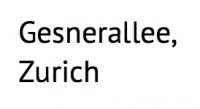Cie Philippe Saire
Av. de Sévelin 36
1004 Lausanne
Suisse
in permanent residency at Théâtre Sévelin 36
+41 21 620 00 12 info@philippesaire.ch
Première at Théâtre Municipal de Lausanne, January 24th, 1999. Choreography for 9 dancers.
The legend. Retelling the story of Faust – which along with Don Quixote and Don Juan is one of European culture’s greatest legends – is a great challenge, not only because of the sheer number of already existing versions, but also because some aspects of the tragedy are so cunningly hidden that the creator may unwittingly pass them by. The legend of Faust has come down to us through almost six centuries, confirming that it contains all the elements which link the timeless human condition to the trials and joys of a single life-span.
Faust is essentially a being torn between extremes, a man with natural, healthy impulses and strivings, at ease with his perceived role in the material world. But he is also tormented and obsessed, propelled by dark forces towards his own ruin and ultimately that of mankind. The human spirit is depicted in a struggle with evil, with desire, with uncertainty and with crucial choices – landmarks looming on the horizon, encompassing the existence of Faust, the man and the myth. Everything has a price. For Philippe Saire, this aspect of the legend is central. Wherever we go, whatever we seem to achieve, sooner or later there is a price to pay. All around us, the headlong rush of technology-dominated millenium fever gathers momentum.
By re-focusing on a legend from another time we may, like Faust, mome ntarily slow the fleeting hours and conclude a pact with ourselves. The approach is to recount the legend of Faust and its philosophy with insolence tempered by sincere respect. Faust and his demon comprise a tragedy. Although the dance retains its freedom to extrapolate, suggest or deviate, the tragedy remains. As in Etude sur la Légèreté the approach to serious themes is unencumbered by gravity. Brazilian residence, July-August 1998. Philippe Saire, along with the company’s two dancer-assistants, set designer Carmen Perrin and lighting designer Jean-Marie Bosshard spent two months in João Pessoa, Brazil, exploring material and determining the direction for this new work. The results were the basis for the next phase of the creative process with the entire company in Switzerland from September to December 1998.
Devil’s Dance – Faust by the Philippe Saire Dance Company. That literature is one of the sources of dance is confirmed repeatedly by Philippe Saire in his interpretation of Faust. The work now showing at the Theaterhaus Gessnerallee – after its premiere in Lausanne – is a fascinating spectacle in which Saire and his eight dancers shift between gravity and lightness, with original music for a quartet led by the composer Daniel Perrin. It satisfactorily answers the question: how can thought be shown as dance? Before Faust’s pact with Mephisto the bodies turn inwards, the groups are deployed geometrically, and the dancers stride the stage with outstretched arms, as though creating space. The pact heralds a total change: now the lines waver, the bodies twist or seem ready to explode, and we are shown that the new confusion is as tightly controlled as was the old life. Both are bound by the same laws. The final confrontation between Faust and Gretchen is an insightful treatment of the end of the story, and a powerful moment: a wrestle between the taking and the sparing of life. This Faust is a splendid demonstration of the choreographer’s command of space, of his art in controlling the dancers as individuals and in groups, now mingling, now separating, according to the rhythms of storytelling yet without lapsing into narrative. In the Swiss contemporary dance scene, mastery to this degree is indeed outstanding.
Neue Zürcher Zeitung, January 1999
A frequent visitor to the Turning World season, Compagnie Philippe Saire’s latest creation takes its inspiration from the Faust legend, but anyone not au fait with the storyline could be forgiven for not making the association, since the theme is applied in an impromptu fashion. {…} But the strength of the piece lies more in its visual appeal than in any narrative sense, and Saire’s choreographic language, as seen here, is rich and innovative. Short phrases of movement are neatly punctuated by still moments, and the dancers – nine in total, wrap themselves from one position to another with dextrous ease. Running for 70 minutes, the dancers are pushed to physical limits, and in one notable passage they throw themselves into a session of explosive, mercurial lacery with the eruptive force of one suddenly let out of a tin. This section concludes when each of the men scoops up one of the panting women for a new phrase of coupledom. Additional visual interest is furnished by Jean-Marie Bosshard’s lighting design, which throws a succession of intriguing patterns on to the floor. If this Faust is perhaps ten minutes too long, it still maintains a rapport with its audience and is an admirable piece.
Emma Manning, The Stage, London, May 1999
Philippe Saire Meets Mephisto
…to the applause of a thousand spectators for the nine dancers interpreting in this world premiere of Faust. In confronting this daunting challenge, Philippe Saire has deployed all the means at his command: magnificent original music by Daniel Perrin, played by an ensemble including the composer, light-reflecting screens by the sculptress Carmen Perrin and a cast carefully matched to the spirit of the work. This Faust is the fruit of a profound reflection demanding inspiration and precision. […] As Faust pursues his path, torn between desires for both charnel pleasure and spiritual purity, the choreography accelerates towards a rich, intense climax. Plunging into sensuality, Saire’s dancers whirl to music of an almost Arabian mood. The cons-truction is extremely complex yet totally con-trolled: space and fullness, motion and stillness, music and silence; all are mastered to per-fection.”
Le Matin (Lausanne), January 1999
“Poetic Hesitation” a Triumph
The first performance at the Lausanne Opera of Philippe Saire’s Faust revealed one of his most ambitious creations yet. […] Sequence after superb sequence, packed with spectacular leaps, succeed each other for fully 90 minutes. The piece is centered on the main theme of the story: Faust – danced by Matthieu Burner – signs a pact with Mephisto that will return to him his abandoned youth, passion and sensuality. The two key figures are portrayed as the sun and the moon – with two and three dancers respectively in each rôle – a richly theatrical idea that yields a plenitude of choreographic possibilities, as well as dramatic swings between the effects of the reflected light from the screens by sculptress Carmen Perrin, and the shadows into which ligthing designer Jean-Marie Bosshard plunges the figures on the stage.
Jean-Pierre Pastori, 24 Heures (CH) 1999
Choreography
Philippe Saire
Dancers
Massimo Biacchi,
Matthieu Bruner,
Manuel Chabanis,
Vinciane Gomrovicz,
Karine Grasset,
Estelle Héritier,
Corinne Rochet,
Philippe Saire,
N.N.
Dancers (rerun at Sévelin 36, Nov. 99)
Nabih Amaraoui,
Marion Ballester,
Karine Grasset,
Estelle Héritier,
Matthieu Burner,
Manuel Chabanis
Set design
Carmen Perrin
Lighting
Jean-Marie Bosshard
Musique
Daniel Perrin
Costumes
Anna van Brée
Music interpreted by
Grégoire Lefebvre, Pascal Desarzens, Pierre-François Massy, Jean Rochat
Choreography
Philippe Saire
Dancers
Massimo Biacchi,
Matthieu Bruner,
Manuel Chabanis,
Vinciane Gomrovicz,
Karine Grasset,
Estelle Héritier,
Corinne Rochet,
Philippe Saire,
N.N.
Dancers (rerun at Sévelin 36, Nov. 99)
Nabih Amaraoui,
Marion Ballester,
Karine Grasset,
Estelle Héritier,
Matthieu Burner,
Manuel Chabanis
Set design
Carmen Perrin
Lighting
Jean-Marie Bosshard
Musique
Daniel Perrin
Costumes
Anna van Brée
Music interpreted by
Grégoire Lefebvre, Pascal Desarzens, Pierre-François Massy, Jean Rochat






